From Concept to Reality: The Five Key Stages of Building An Escape Room Facility
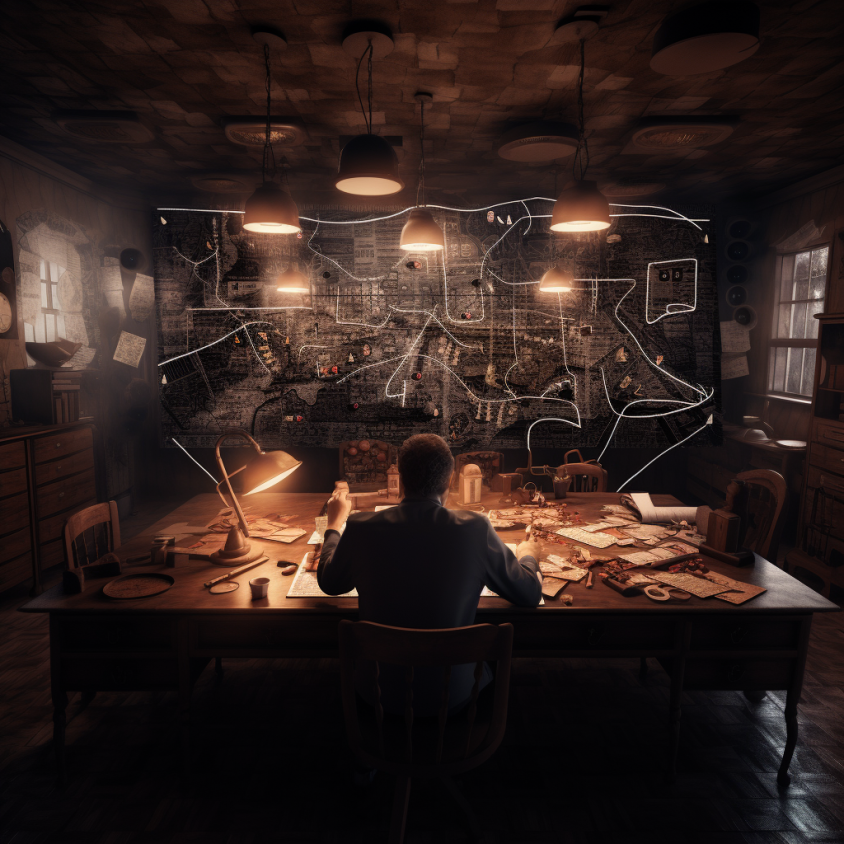
Embarking on the journey of opening an escape room business is an exhilarating adventure that demands meticulous planning and creativity. The process comprises five main stages, each contributing to a successful project, and ultimately an immersive and thrilling experience that captivates players.
1. PLANNING
The planning phase is critical and should never be rushed as the whole project will be executed based on these plans. Detailed architectural and project documentation, potentially spanning 100 pages, outlines key details such as the main floor plan, puzzle layout, camera locations, and interior finish specifications.
| PRO TIP: After receiving the floor plans of the property, along with a sufficient number of pictures and videos of the site, PanIQ Room’s experienced team creates a comprehensive, easy-to-read set of construction plans. |



These plans serve as the foundation upon which a local architect develops the official architectural drawings, as well as a blueprint for the project manager to reference during any phase of the project.



2. CUSTOM FABRICATION
In the next stage of escape room development, once the plans are ready, the focus shifts to custom fabrication. This crucial phase involves the meticulous crafting of props, furniture, and immersive elements that bring the escape room’s narrative to life. These intricately designed pieces are not just ordinary furnishings; they are integral to the experience, and are all custom-built in PanIQ Room’s factory. With craftsmanship at its core, custom fabrication takes place in Europe, where skilled professionals (ranging from woodworkers, artists, electricians & welders) carefully create and test each item before packing them securely for their journey. Once completed, these components embark on a journey of their own, usually transported across the ocean by sea.
Important note: this stage can be, and usually is, simultaneous with the rough construction stage.
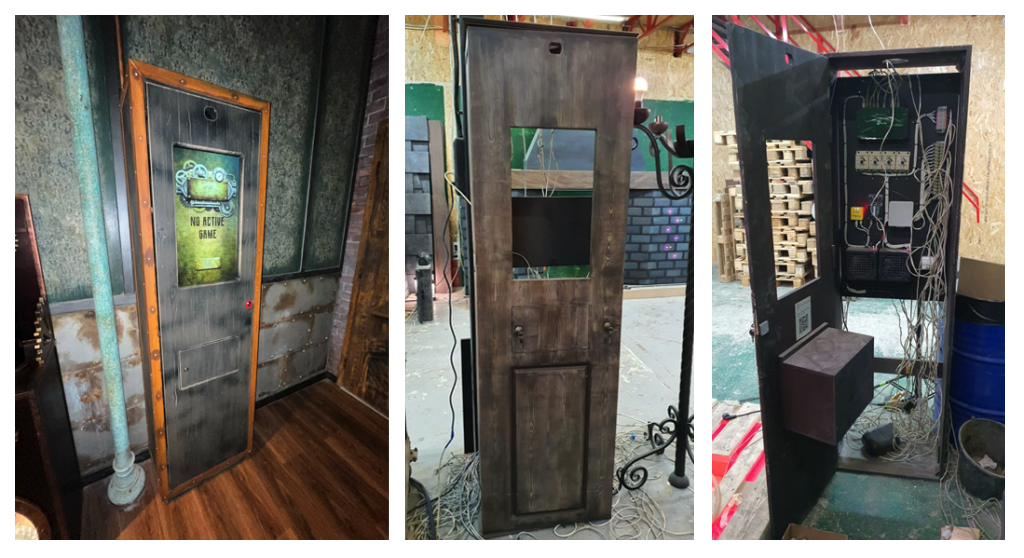

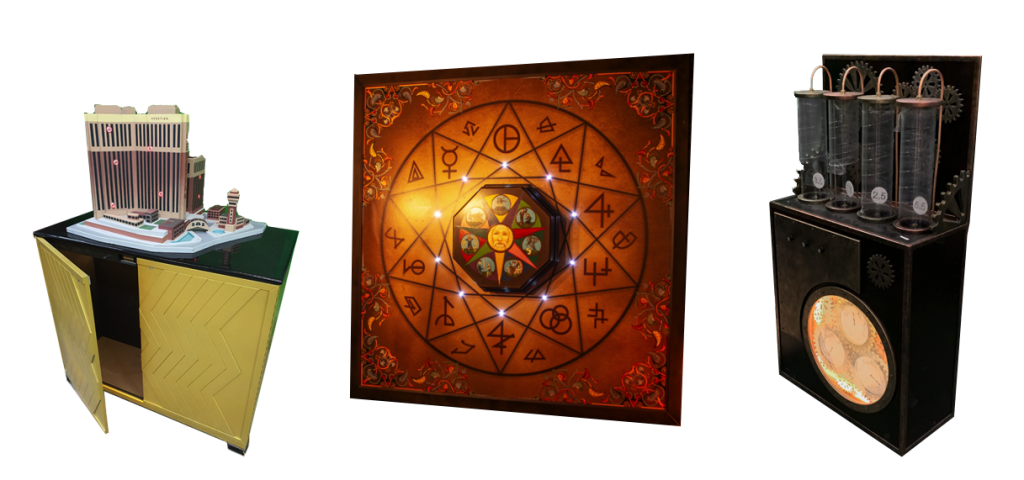
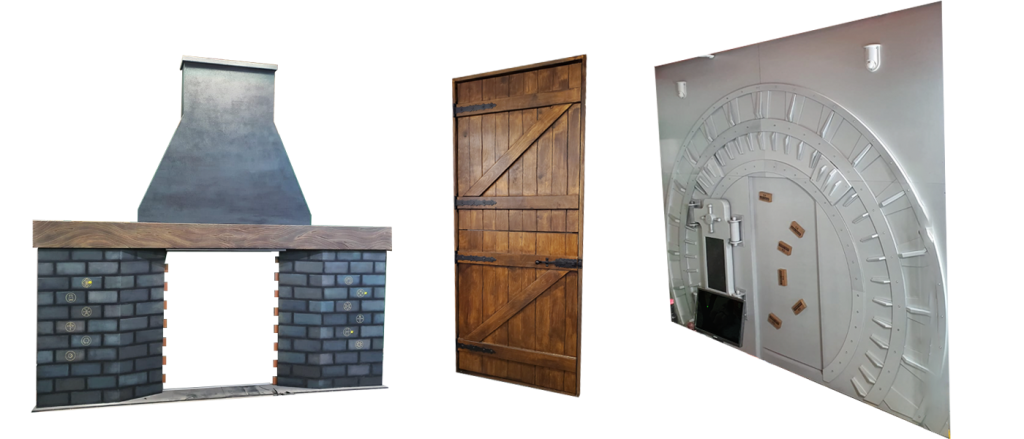
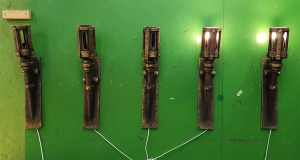
PRO TIP: available for order upon request (not part of a room set by default)
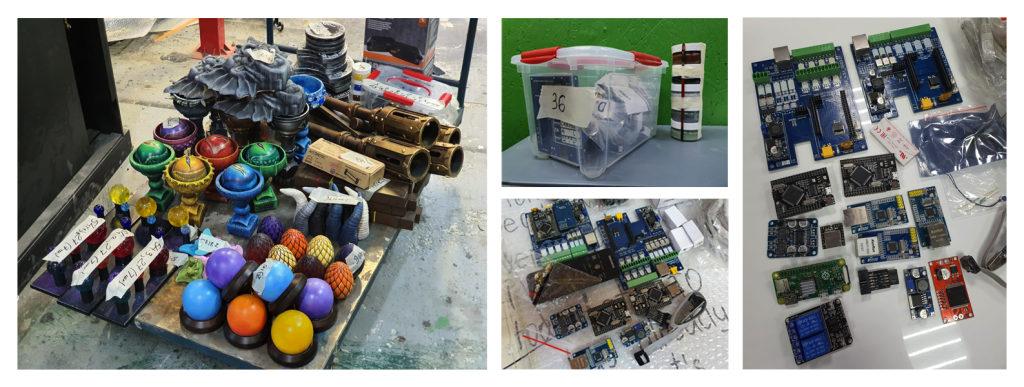
3. ROUGH CONSTRUCTION
At the heart of every escape room lies the foundation – the rough construction stage. This is where the physical space takes shape, transforming a mere concept into a tangible reality. Walls, partitions, doors, and spaces are built with intent and precision, considering not only base functionality and structural integrity but also the flow and layout that will enhance overall gameplay and customer flow. This stage sets the canvas upon which the entire escape room masterpiece will unfold. This phase includes (but is not limited to) plumbing and the creation of restrooms, installing the HVAC system, completing the rough-in electrical work, and making the space wheelchair accessible.
A critical aspect of this stage is low voltage wiring, encompassing the wiring of the speaker system, camera system, and preparing the game areas for puzzle installation by running wires for the individual props.
The ultimate goal of this phase is to reach a ‘white box condition’ (also known as vanilla box): a space with all rough-in work complete (structural, mechanical, plumbing & electrical), with the walls closed up, with no finishes.
| PRO TIP: White box in PanIQ Room’s project dictionary means the space is ready for theming. |
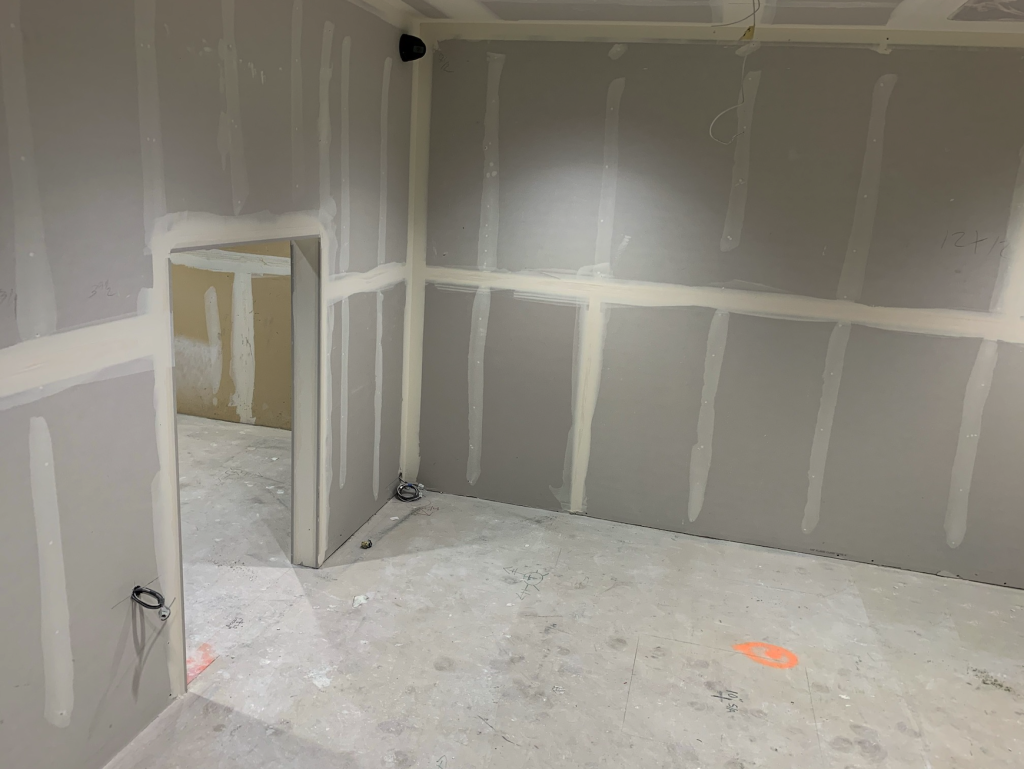

4. THEMING
Once the structural elements are in place, it’s time to breathe life into the space through theming. Theming is the soul of an escape room, dictating the narrative and creating an immersive atmosphere. Theming is the specialized interior finish stage in the game areas. Whether it’s a mysterious ancient temple, a futuristic space station, or a haunted mansion, the theming stage brings the storyline to life. Main tasks in this stage include installing special flooring, adding wallpapers/wall panels/painting. Attention to detail is key, as every element, from props to paint colors, contributes to the authenticity of the environment. The goal is to transport players to another world, making them feel an integral part of the adventure.
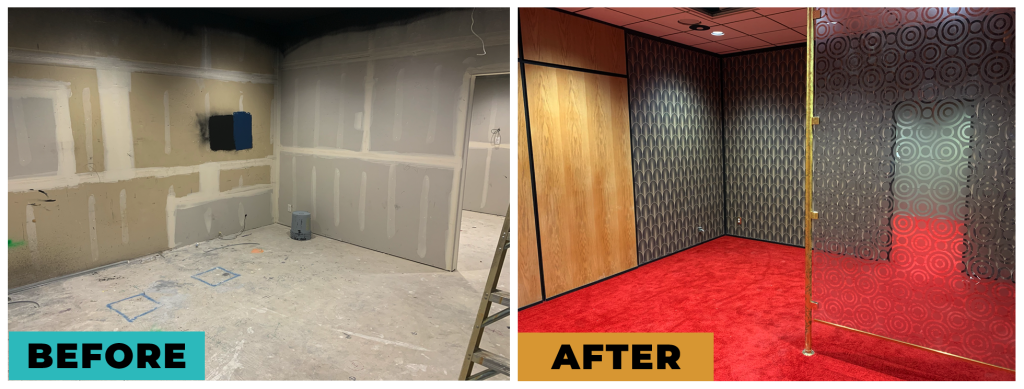
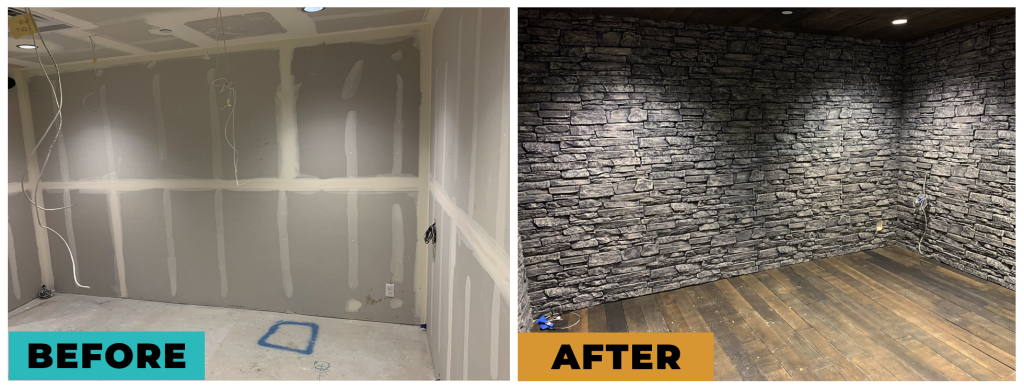
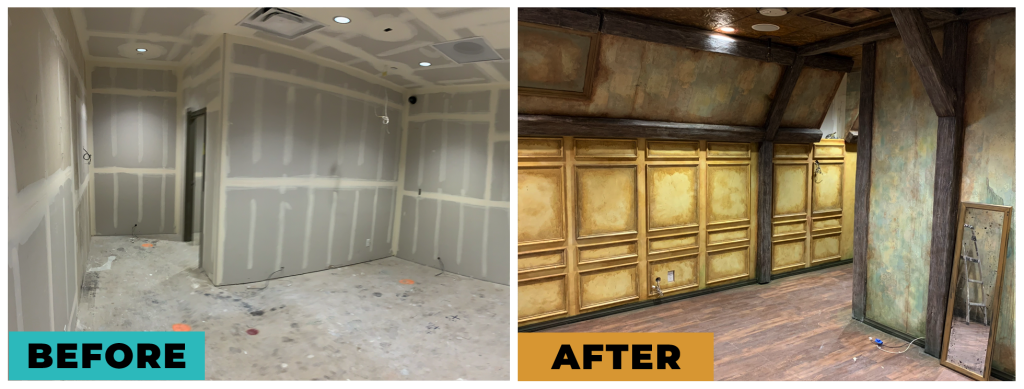
5. PUZZLE INSTALLATION
No escape room is complete without a series of mind-bending puzzles that challenge and engage participants. The puzzle installation stage is where the magic happens: as each puzzle is strategically placed to guide players through the storyline. From decoding cryptic messages to unlocking hidden compartments, the puzzles seamlessly integrate with the theme, offering a cohesive and intellectually stimulating experience.
| PRO TIP: Puzzles can be installed with PanIQ Room’s on-site assistance (based on the plans provided by PanIQ), but it can also make sense to have some experts on site to install and fine-tune your room. PanIQ Room is ready to assist with these. |
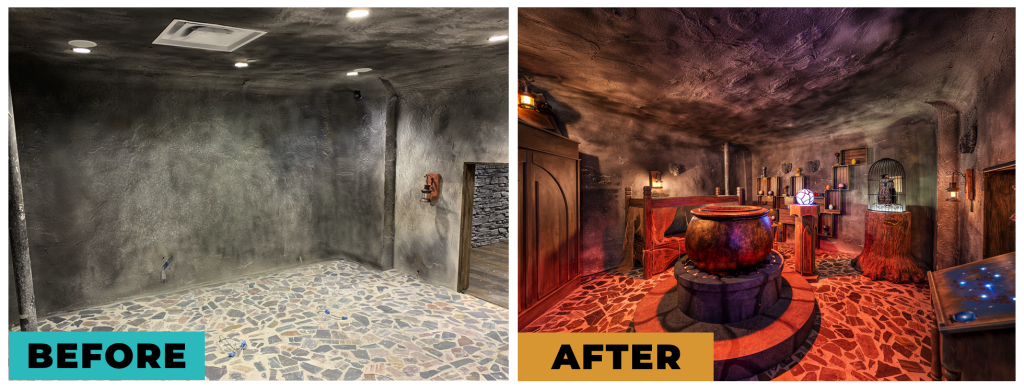
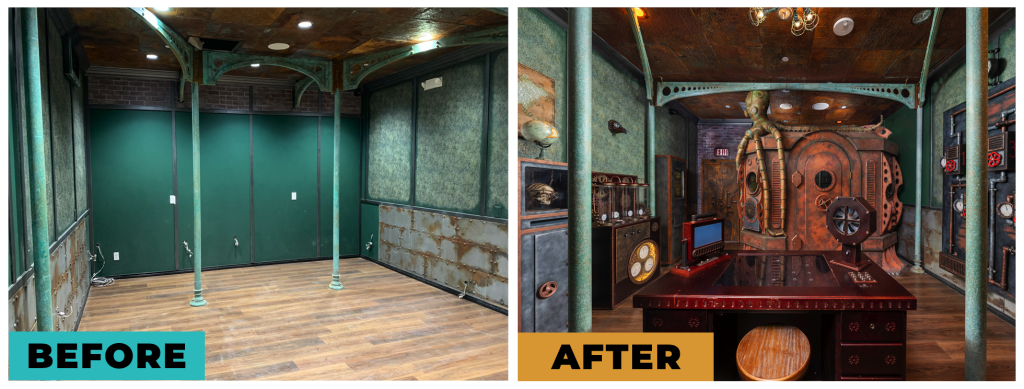
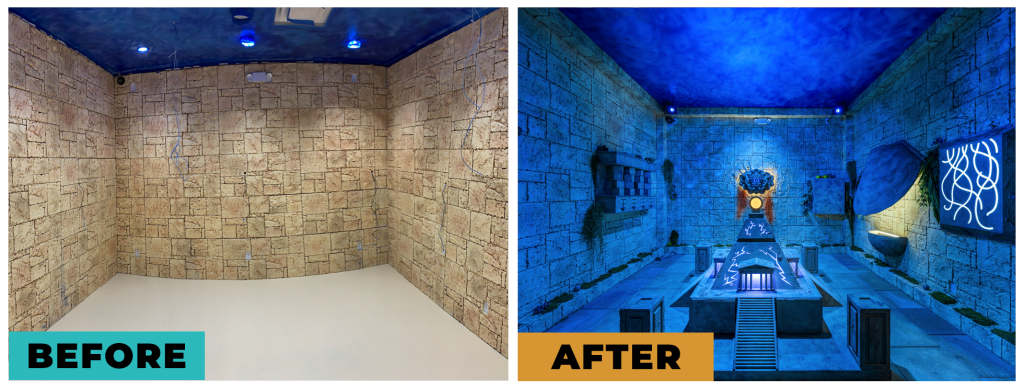
As a project manager of an escape room facility building project, proficient coordination between rough construction, theming and puzzle installation is of paramount importance.
As you embark on the journey of creating your own escape room business, remember that each stage is a brushstroke on the canvas of an unforgettable experience. Whether you’re constructing a haunted mansion or a high-tech espionage mission, the key is to capture the essence of the narrative, engage players, and transport them to a world where the line between reality and fiction blurs.
6. PRE-OPENING
The pre-opening phase involves hiring, testing, furnishing your control room, setting up all the supporting systems around your operations, training, obtaining necessary licenses and insurances, and addressing various miscellaneous tasks related to your project. This stage is where you establish your business operations and prepare to welcome your first customers.
| PRO TIP: PanIQ Room is ready to provide remote, as well as on-site training for your project which includes customer service, game mastering, reset, maintenance & sales training as well. |
Prepare yourself or designate a manager to dedicate significant time during this stage to establish robust operational policies and procedures, ultimately to make sure your business is ready to create an exceptional customer experience from start to finish.
Happy building!
Interested in opening your own escape room but not sure where to start? Partner with PanIQ Room, the industry leader in escape room franchising. Holistic franchise experience with cutting edge escape rooms and top-tier supporting operational systems. More info on our franchise page.